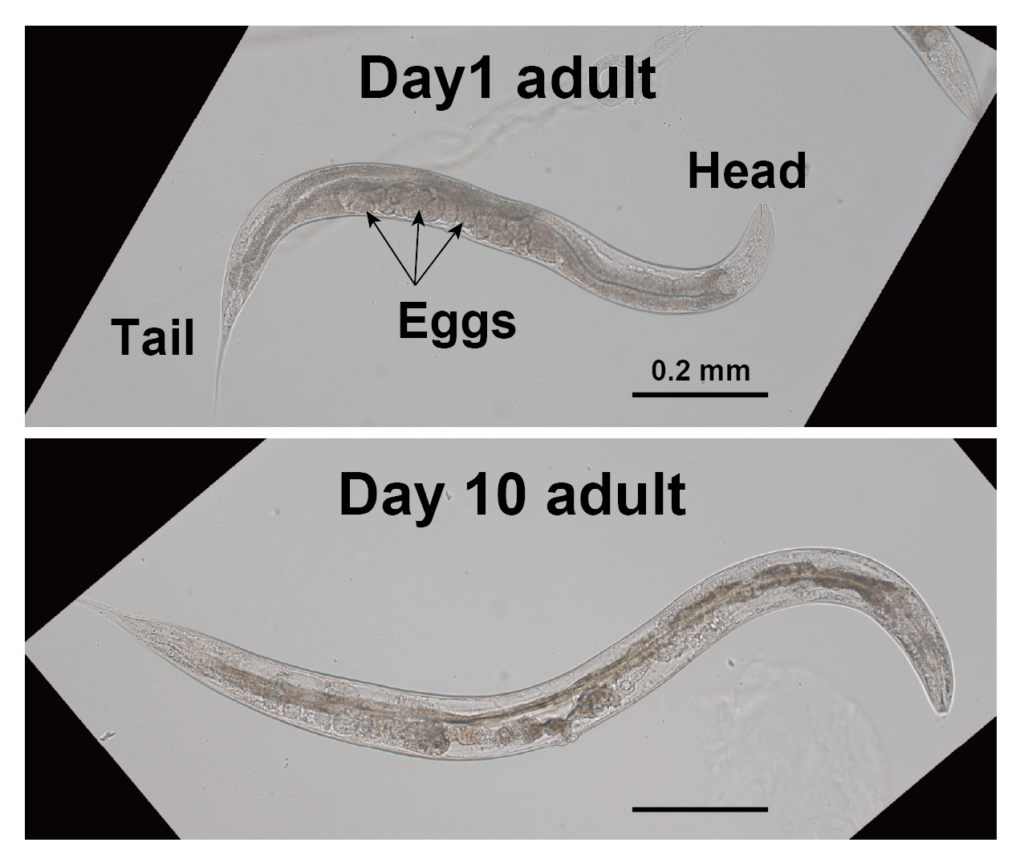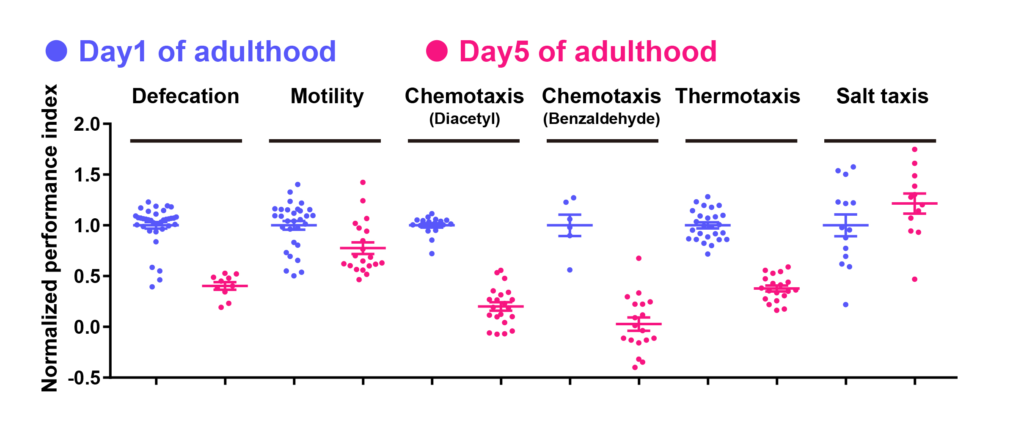Question
What is the molecular mechanism of neuronal aging? How does the environment affect neuronal aging?
We unconsciously accept that we all age. Our brains and neurons age. That is so true that we believe neuronal aging is an inevitable, natural, and passive process. Is it true? What if neuronal aging is genetically programmed? What if our diet can modulate neuronal aging? We are addressing the molecular mechanism of how neuronal functions change over time.
YouTube: Ken's public talk in Japanese about lifespan and neuronal aging
Approach
Studying neuronal aging is challenging because aging and behavior have inherent variations and aging spans a long time. To overcome these challenges, we use a nematode, C. elegans, as a model. We favor unbiased approaches and carry out genetic screens of C. elegans and bacteria, which serve as food for C. elegans.
C. elegans

C. elegans is a free-living soil nematode which is 1 mm long. C. elegans is ideal for studying neuronal aging for several reasons:
1. Short lifespan
In the laboratory, C. elegans lives for 2 to 3 weeks and manifests behavioral changes within a week of egg laying.
2. Population analysis
Since C. elegans is tiny, we can readily cultivate many worms on a small plate. In addition, their large brood size (~300 progeny) helps to prepare many individuals.
3. Genetic tractability and homogeneity
C. elegans is usually a hermaphrodite, which can self-fertilize and reproduce itself. Thus, we can readily generate a genetically homogenous population.
To learn more about C. elegans, watch Ken's talk to the general audience at Nagoya University (Video).
Behaviors
We quantify several behaviors of C. elegans as a proxy of neuronal functions. Their behaviors change during only five days of adulthood (eight days after birth).

1. Chemotaxis
Worms are innately attracted to the smells of bacteria, which serve as food.
Suryawinata et al., Sci Rep, 2024
2. Thermotaxis
Worms associate cultivation temperature and food availability and show attraction to the temperature at which they are cultivated with foods.
Higurashi et al., eLife, 2023; Aleogho et al., PNAS, 2025
Bacteria
C. elegans eats bacteria as food. We use different bacteria to address the dietary effect on neuronal aging.
1. E. coli
E. coli, OP50 strain, is the standard diet in the laboratory condition
2. Lactic acid bacteria
Lactic acid bacteria are long known as probiotics. We use them as an alternative food source for C. elegans.
Higurashi et al., eLife, 2023; Suryawinata et al., Sci Rep, 2024; Aleogho et al., PNAS, 2025
